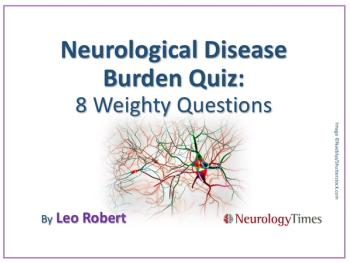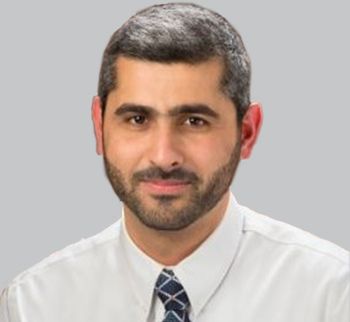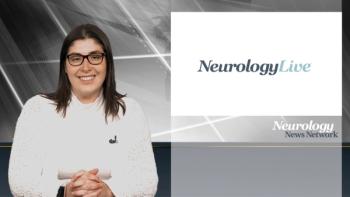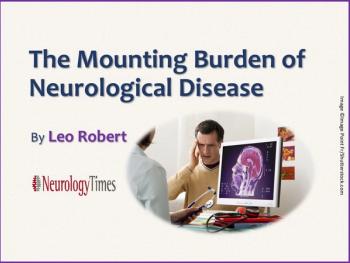
The designation was granted by the FDA based on the results of the largest study ever conducted with monotherapy in NMOSD, which were favorable for the anti-CD19 antibody.

The designation was granted by the FDA based on the results of the largest study ever conducted with monotherapy in NMOSD, which were favorable for the anti-CD19 antibody.

With 2 targeted treatments on the market, therapeutic development may now focus on early detection.

In addition to efficacy end points, the WEB system was markedly safer compared to current treatments, with no primary safety end points occurring between 30 days and 1 year.

Phase 2 trial results suggest the possibility of a treatment that may regenerate brain cells following TBI.

The phase 1 results support the initiation of the phase 2/3 clinical trial which is expected to initiate in July 2019.

It has been estimated that between 40% and 60% of patients with PD use at least one form of complementary medicine. In this podcast, neurologist Sarah Mulukutla, MD, MPH talks about CAM options for neurologists to discuss with their patients.

Data from the STR1VE trial have reinforced the findings from the phase 1 START trial, including inclinations of prolonged survival as well as milestone achievement never seen in the natural history of SMA.

Alder Biopharmaceuticals’ monoclonal antibody was recently submitted in a BLA to the FDA and is on pace to hit the newly crowded preventive migraine market in early 2020.

Chronic pain, sleep disorders, neuropathy, and anxiety were the most common conditions that showed improvement in the study.

MediciNova will be moving forward with a phase 2b/3 clinical trial of the ALS therapy, also known as MN-166, in 150 patients. If successful, its data will be used to support an NDA.

Patients with multiple sclerosis who were exposed to teriflunomide during pregnancy experienced similar risks of major birth defects and spontaneous abortions to the general population’s rates of 2% to 4% and 15% to 20%, respectively.

The scale includes 11 observable characteristics of CDM1 and was established through the merging of experiences and advice from patients, caregivers, therapeutic experts, and the FDA.

The Aquestive Therapeutics product, marketed as Exservan, was previously granted an orphan drug designation in January 2018. Its NDA is supported by a number of studies which sought to confirm its bioequivalence to its reference listed drug.

The study also added to a growing base of findings which suggest that patients who have failed preventive medications prior to trial participation have lower placebo responses, which could have implications for clinical trial design.

The senior preclinical and clinical imaging scientist at the National Institute of Neurological Disorders and Stroke spoke about the potential of the central vein sign to help improve the time to an accurate diagnosis in MS.

In an ongoing phase 2 study, 21 nonambulatory participants with Duchenne muscular dystrophy passed the 52-week treatment mark.

Data from the EVOLVE-1 and EVOLVE-2 phase 3 clinical trials suggest that galcanezumab (Emgality, Eli Lilly) can maintain ≥50% responder rates equivalent to that of placebo while reducing more monthly migraine days for 5 months after halting treatment.

Take this brief quiz to test your knowledge of the increasing impact neurological disorders are having on patients’ health and well-being.

Exome-based screenings may allow for maximum diagnostic yield in an increasingly crowded field of genetic tests.

Results of a recent real-world study at 2 MS centers have uncovered misdiagnosis rates of 17% and 19%, with patients facing an average time of misdiagnosis of 4 years during which they may be subject to numerous risks due to improper treatment.

Neurology News Network for the week of April 13, 2019.

A shorter yet deeper therapeutic coma for treatment of refractory status epilepticus may be more effective and safer than the currently recommended therapeutic coma duration of 24 to 48 hours.

Over the course of 2 years, findings revealed that serum NfL levels were significantly higher in patients with evidence of disease activity compared to those with no evidence of disease activity as well as 35 age-matched healthy controls.

The chief scientific officer of the Parkinson’s Foundation spoke about the developing interest in genetic forms of Parkinson, the potential to target therapies in that direction, and how a genetic treatment is the next big stage for the field.

The PEGASUS principal investigator and Translational Neurology Head of the Interdisciplinary Brain Center at Massachusetts General Hospital and Harvard Medical School spoke about the Amylyx Pharmaceuticals product’s potential in Alzheimer.

Pembrolizumab resulted in a decrease in the detection of programmed cell death protein 1 on lymphocytes in both cerebrospinal fluid and peripheral blood, with 5 of the 8 patients displaying clinical improvement or stabilization.

The differential diagnosis of frontotemporal dementia is complicated by its heterogenous clinical presentation, with symptoms that overlap with several other dementias.

Amylyx Pharmaceuticals announced the trial of the 2-drug combination is seeking to enroll 100 patients with late-stage mild cognitive impairment or dementia due to Alzheimer, with plans to complete the study in 2020.

A new analysis provides a comprehensive update on this significant, and growing, cause of disability and death.

The FDA cited 2 deficiencies in the NDA: certain nonclinical studies were not included to allow for assessment of chronic administration of fenfluramine; and an incorrect version of the clinical data was submitted.